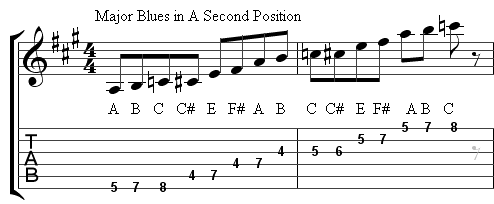Here’s a nice little lesson for you about harmonization in blues playing,
including a new turnaround I just wrote.

There’s a lot more info on harmonizations in my blues course:
CLICK HERE FOR “HOW TO PLAY SMOKIN BLUES”
In today’s video I’m going to show you
how to play a harmonized blues progression.
So let me play it for you and then I’ll
show you how to play it.
Okay. So this is just a 12-bar blues in the
key of E. And it’s in a shuffle pattern. Okay?
So you count it out as a triplet. One, two, three;
one, two, three.
And I’m playing on the one, holding it on the two
and then playing the chord a second time on the three;
like this. One, two, three; one, two, three; bum,
bum, bum. That’s she shuffle rhythm.
Now, let me show you how to harmonize the chorus.
Let’s start with our E-7 and if you take the two
notes that I’m fretting in this chord, which are
the B and the G-sharp, what we’re going to do is
we’re going to take each of them and just move
them up on the same string to a higher fret,
to the next note in the E-major scale.
So this B will go up to the C-sharp and
this G-sharp will go up to the A.
Then, we go up one more time again. The C-sharp
will go up to the D and the A will go up to a B.
So we have this. And then back down.
What I’m going to do is stay in that shuffle
rhythm and play all six strings to give it a full sound.
So I’m going to go through that twice,
which will be four bars, and then I’m going
to go to the A. Got my open A-7 and how I
harmonize this one is I’m going to go up to
this shape, which is kind of like an
inverted D chord.
I’ve got my ring finger on the fourth fret
of the D string, my first finger on the second
fret of the G string and my middle finger on
the third fret of the B string, while playing
the open A and high E string.
And then finally, I go up to this shape, which
is kind of an unusual shape. I’ve got my middle
finger on the fifth fret of the D string and my
ring finger on the fifth fret of the B string,
and I’m playing the A, G and high E strings open.
And then back to the E. And here’s the turnaround.
Okay?
So the first half of the turnaround is all on the
D, G and B strings. Just like when we had this
in the A, now we’re going to do this, just
two frets up. And then A, down to D shape.
This A is just a triad here. And then the
second half of the turnaround, back to the E pattern.
And then the final lick is… You’ve got open E,
fourth fret; open A, first fret on the A; and
then B-7. The only tricky part is where we’re
coming in with this lick. We start it on the
three of the second measure. So you have one,
two, three; one, two, three.
That’s when you start that.
One, two, three; one, two, three.
So there you have it.




